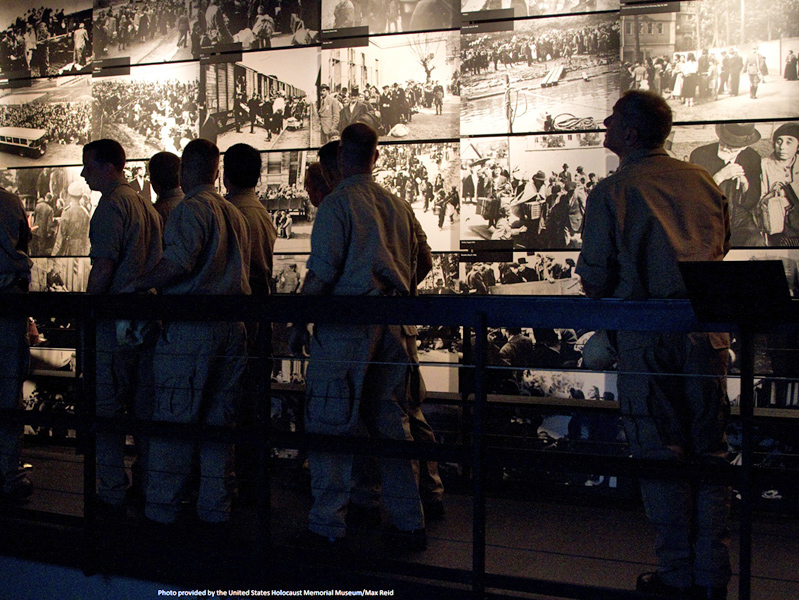Archived Content
In an effort to keep ICE.gov current, the archive contains content from a previous administration or is otherwise outdated. This information is archived and not reflective of current practice.
Top Story: The Holocaust seen through the lens of today
Throughout the year, U.S. Immigration and Customs Enforcement (ICE) offers a wide range of technical and educational programs as opportunities for employees to learn and explore how the agency can best serve and protect the public.
One popular program, Law Enforcement and Society: Lessons of the Holocaust, is jointly sponsored by the Anti-Defamation League (ADL) and the U.S. Holocaust Memorial Museum. The course is open to all ICE employees, 27 of whom visited the museum on December 16, 2010 to participate.
The program began with a history segment led by a museum historian who provided context to how Adolf Hitler came to power and how the Holocaust began. Next, tour guides (two of whom were Holocaust survivors) led ICE visitors through exhibits, which depict the progression of an unchallenged regime that murdered millions and ultimately brought the world to war. The Holocaust occurred during a 12-year time span, from 1933 with Adolf Hitler's rise to power to the end of World War II in 1945, and is a 20th century example of how bystander behavior led to devastating consequences.
Personal reflection and classroom discussion followed the museum tour, moving ICE professionals to define and ponder the national, professional and personal core values underlying each and every role at ICE.
Standing in front of the class with chalk in hand, ADL Regional Director David C. Friedman asked a wide-sweeping question: "What is it that ensures you do the right thing?" A moment of silence ensued, followed by a burst of ideas and then robust discussion surrounding responses that included "self-imposed integrity," "the U.S. Constitution," "the greater good," "professionalism" and "personal conscience."
"People who choose to go into law enforcement generally do so out of a desire to help people, to protect others and to give back to our country," said Friedman. "In their visits to the Holocaust Museum they see a world that violates almost everything they value and believe in. I am always deeply affected by how much these professionals care about what they do."
The program has flourished since 1999 when ADL and the museum designed and created the course at the request of former Police Chief Charles Ramsey of the Washington, D.C., Metropolitan Police Department to train new recruits. The training is now offered to several federal law enforcement agencies.
"One of the program's goals is to teach and illustrate the dangers associated with abusing power, permitting prejudice and intolerance and the critical importance of maintaining integrity in all situations," said ICE Office of Training and Development (OTD) Assistant Director Charles DeVita. "For the men and women of ICE, our values define our identity. Protecting and helping others and doing what is right are inherent in the law enforcement profession and in our mission."
One program participant summed up his experience by saying, "They presented the history of the Holocaust as objectively as possible, allowing the horror of the events to speak for itself. No lessons were drawn or morals suggested (or, if they were, it was through the subtlest implication). We, as humans and as law enforcement officers, were allowed to draw our own lessons, ask our own questions and grapple with our own thoughts. Not only do I think that this is the best approach to this subject, I believe it is the only effective one."


